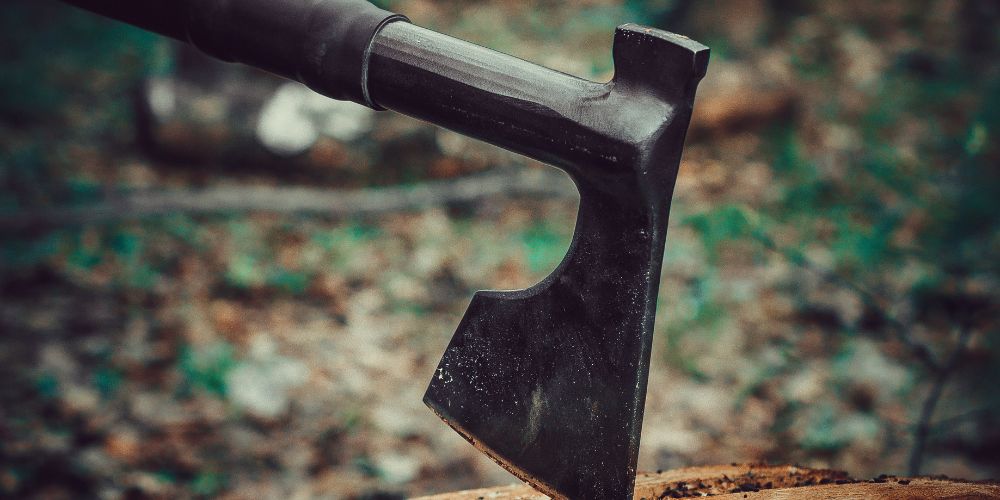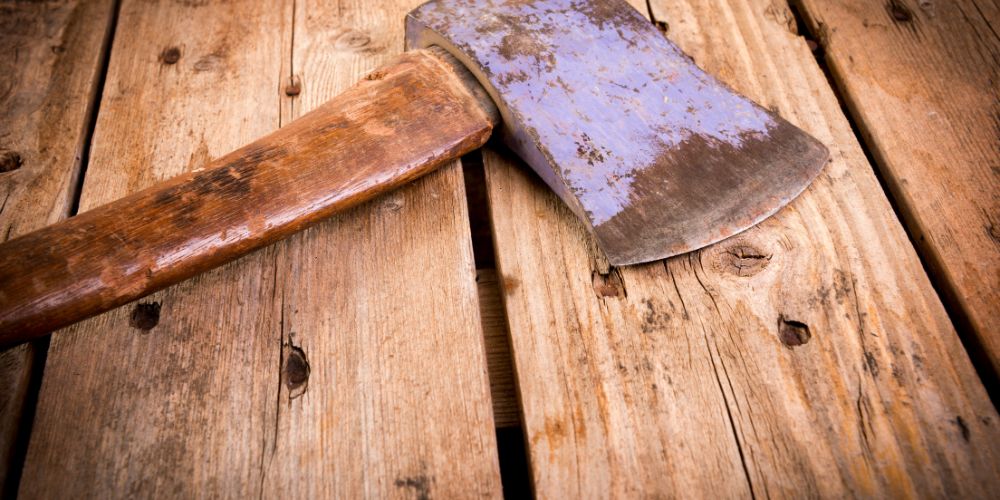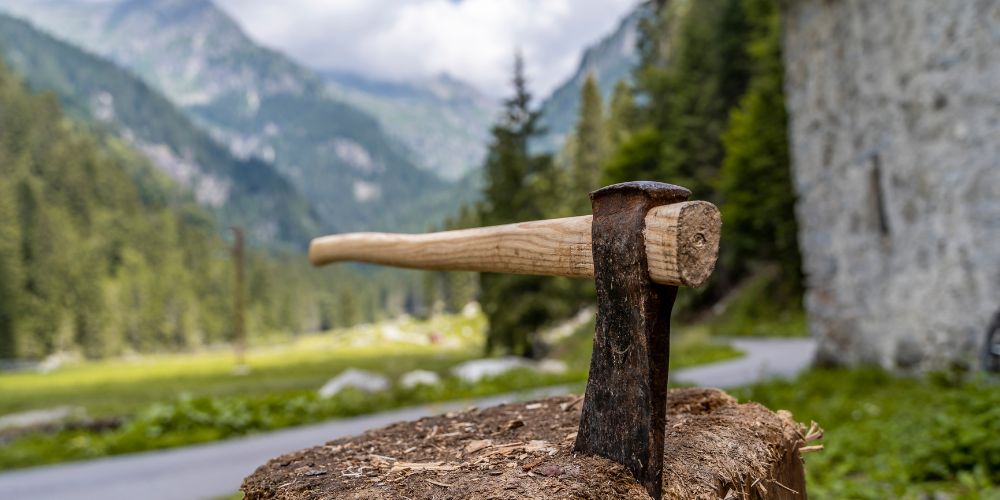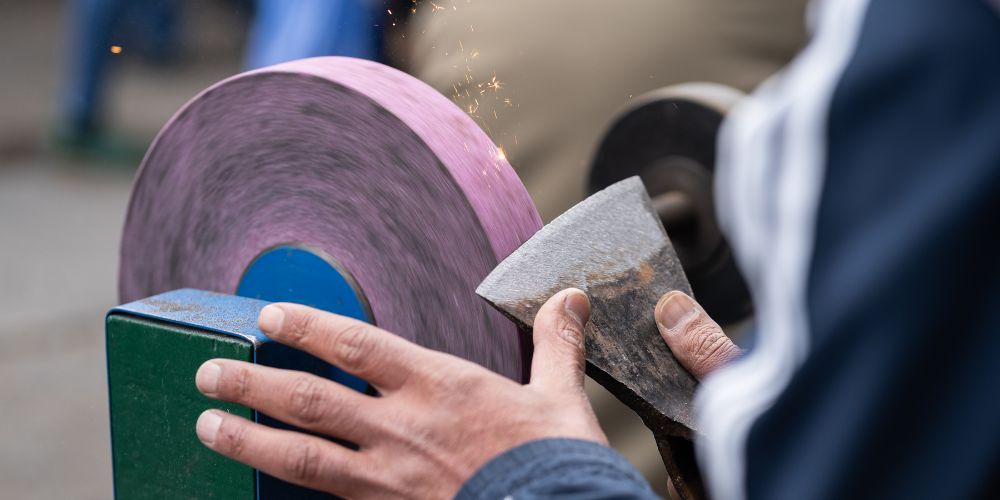Overview
For a hatchet to remain effective and secure, it must be sharpened. The angle of the bevel, the kind of sharpening tool used, the state of the hatchet’s edge, and the user’s level of expertise are all things to take into account.
A tool’s lifespan can be extended and accidents can be avoided with proper sharpening. Always exercise caution when working with sharp things.
How to Sharpen a Hatchet
Sharpening a hatchet is essential to ensure that it remains effective and safe to use. A dull hatchet requires more effort to use, which can lead to accidents. Here are the factors to consider when sharpening a hatchet:
Angle of the bevel
The angle formed by the blade’s edge and flat side is known as the bevel. A hatchet’s bevel angle normally ranges from 15 to 25 degrees. While a greater angle makes the blade stronger but less sharp, a lower angle makes the blade sharper but less durable.
Consult the manufacturer’s instructions or a protractor to calculate the hatchet’s angle. Maintain the current angle when sharpening to prevent changing the hatchet’s balance.

Type of sharpening tool
Hatchets can be sharpened with a variety of equipment, including files, diamond sharpeners, and sharpening stones. The most typical sharpening stones have differing grits for different abrasion levels.
Sharpeners made of diamond are more resilient and can be used dry or wet. The best tool for removing dents and nicks off the blade is a file. Depending on the state of your hatchet and your level of competence, pick the instrument that works best.
Condition of the hatchet’s edge
Check the edge of your hatchet for nicks, chips, or bends before sharpening it. Before sharpening, all abnormalities should be removed with a file. Consider taking the blade to a specialist for repair if it has sustained significant damage.
Once the blade is free of damage, begin sharpening it by starting at the base and moving toward the tip while exerting consistent pressure.
User’s skill level
Hatchet sharpening calls for a specific amount of expertise and knowledge. Start with a coarse grit sharpening stone if you’re a beginner, and as you gain experience, move up to a finer grit.
Maintaining a constant angle, move the hatchet around the stone in a circular manner. If you’re unsure of your technique, think about enrolling in a class or speaking with a specialist.
FAQs
1. How often should I sharpen my hatchet?
It depends on how frequently you use it. If you use it regularly, you may need to sharpen it every few weeks or months. If you use it infrequently, you may only need to sharpen it once or twice a year.

2. Can I sharpen a rusty hatchet?
Yes, but you’ll need to remove the rust first. Use a wire brush or sandpaper to remove the rust, then follow the steps for sharpening your hatchet.
3. Is it necessary to oil my hatchet after sharpening?
Yes, oiling your hatchet after sharpening helps prevent rusting. Use a thin layer of mineral oil or a specialized oil designed for metal tools.
4. Can I sharpen a hatchet with a Dremel?
Yes, a Dremel can be used to sharpen a hatchet, but it requires a steady hand and a bit of practice. Use a grinding wheel attachment and maintain a consistent angle.
Conclusion
We talked about how crucial it is to understand how to sharpen a hatchet to keep it safe and effective. We listed four things to think about when sharpening a hatchet: the angle of the bevel, the kind of sharpening tool, the state of the hatchet’s edge, and the skill level of the user.
Additionally, we answered four frequently asked questions regarding sharpening a hatchet and provided thorough justifications for each element.









